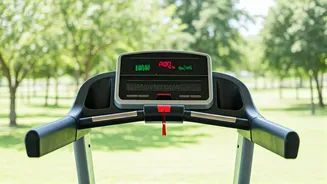Walking: Simple Yet Powerful
Walking is an exceptionally simple yet highly effective exercise for blood pressure management. Regular brisk walks, even for a short duration each day,
can yield positive results. Aim to walk at a pace where you can still hold a conversation, but your breathing becomes noticeably heavier. Start with 10 to 15 minutes of walking daily, and gradually increase the duration and intensity. Consistent walking improves cardiovascular health by improving the efficiency of the heart and blood vessels. It helps to lower blood pressure over time. Incorporating walking into your daily routine is easily achievable, and can be done during a lunch break, or in the evening. This easy activity promotes overall health and is accessible to almost everyone, making it a great place to begin the journey toward improved blood pressure management.
Jogging/Running: Increase Intensity
Jogging or running is a more vigorous exercise that elevates heart rate, further benefiting the cardiovascular system. When starting a jogging or running routine, begin with a gentle pace, gradually increasing both the speed and duration. It's crucial to warm up before each session and cool down afterward to prevent injuries. Running enhances the body's ability to use oxygen efficiently, thereby improving cardiovascular fitness, and reducing blood pressure. Regular jogging or running helps to strengthen the heart muscles, which allows them to pump blood more effectively. As a result, blood pressure typically lowers. Monitoring your body's response, and consulting with a healthcare professional before starting any new, high-intensity exercise is extremely important, to ensure it suits your personal health requirements.
Swimming: Gentle, Full-Body
Swimming offers a low-impact, full-body workout that's gentle on the joints, making it ideal for individuals with joint problems or those who prefer a less strenuous activity. The buoyancy of water reduces stress on the body. This is a great alternative. Swimming is also a fantastic cardiovascular exercise because the body has to work against water resistance. Regular swimming sessions can lead to significant improvements in blood pressure control. Swimming helps to improve circulation and strengthens the heart, which both contribute to lowering blood pressure. The controlled, rhythmic movements in swimming also promote relaxation, which can further benefit blood pressure levels. The exercise is also a great option for people of all fitness levels. Swimming can be enjoyed in a pool, lake, or ocean setting, making it a versatile exercise choice.
Cycling: Enjoyable, Effective
Cycling, another excellent cardiovascular exercise, is both enjoyable and effective for managing blood pressure. Whether on a stationary bike or outdoors, cycling helps to improve heart health. Aim for moderate-intensity cycling, maintaining a pace that slightly elevates your heart rate. Regular cycling enhances cardiovascular fitness by boosting blood circulation, which helps lower blood pressure. The benefits of cycling include strengthening the heart, which enables it to pump blood efficiently. Cycling is versatile and can be adapted to individual fitness levels and preferences. It is also an enjoyable activity that encourages consistent exercise. The regularity of cycling sessions and its positive effects on heart health are very beneficial.
Weight Training: Build Strength
Weight training, when performed correctly, can be a valuable addition to an exercise routine for blood pressure management. Engaging in resistance exercises helps to build muscle mass, improve metabolism, and improve cardiovascular health. It's important to start with lighter weights and gradually increase the resistance as you get stronger. Proper form is crucial to avoid injuries. Weight training can help lower blood pressure over time as it improves overall cardiovascular function. It can also help manage weight, which is another factor affecting blood pressure. Include exercises like squats, bench presses, and rows in your routine, making sure to work all major muscle groups. Before starting weight training, or any new exercise regimen, consult a healthcare professional, especially if you have pre-existing health conditions.
Yoga and Pilates: Calm & Control
Yoga and Pilates are beneficial exercises that incorporate elements of flexibility, balance, and controlled movements. These practices can help lower blood pressure through stress reduction and improved cardiovascular health. Yoga combines physical postures, breathing techniques, and meditation, which contribute to relaxation and lower stress levels. Pilates focuses on core strength, flexibility, and controlled movements, contributing to cardiovascular fitness. Both practices can help reduce blood pressure and improve overall well-being. Yoga and Pilates are also great options for people of all ages and fitness levels. The practice can be modified to suit individual needs. Practicing regularly can help improve blood pressure and overall mental and physical wellness.











